Related Research Articles

The Boeing 767 is an American wide-body aircraft developed and manufactured by Boeing Commercial Airplanes. The aircraft was launched as the 7X7 program on July 14, 1978, the prototype first flew on September 26, 1981, and it was certified on July 30, 1982. The initial 767-200 variant entered service on September 8, 1982, with United Airlines, and the extended-range 767-200ER in 1984. It was stretched into the 767-300 in October 1986, followed by the extended-range 767-300ER in 1988, the most popular variant. The 767-300F, a production freighter version, debuted in October 1995. It was stretched again into the 767-400ER from September 2000.

The Boeing E-3 Sentry is an American airborne early warning and control (AEW&C) aircraft developed by Boeing. E-3s are commonly known as AWACS. Derived from the Boeing 707 airliner, it provides all-weather surveillance, command, control, and communications, and is used by the United States Air Force, NATO, French Air and Space Force, Royal Saudi Air Force and Chilean Air Force. The E-3 has a distinctive rotating radar dome (rotodome) above the fuselage. Production ended in 1992 after 68 aircraft had been built.

The Northrop Grumman E-8 Joint Surveillance Target Attack Radar System is a retired United States Air Force (USAF) airborne ground surveillance, battle management and command and control aircraft. It tracks ground vehicles and some aircraft, collects imagery, and relays tactical pictures to ground and air theater commanders. The aircraft was operated by both active duty USAF and Air National Guard units and also carried specially trained U.S. Army personnel as additional flight crew until its retirement in 2023.

The Northrop Grumman RQ-4 Global Hawk is a high-altitude, remotely-piloted surveillance aircraft introduced in 2001. It was initially designed by Ryan Aeronautical, and known as Tier II+ during development. The RQ-4 provides a broad overview and systematic surveillance using high-resolution synthetic aperture radar (SAR) and electro-optical/infrared (EO/IR) sensors with long loiter times over target areas.
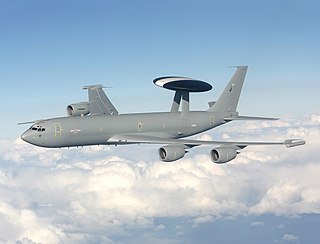
An airborne early warning and control (AEW&C) system is an airborne radar early warning system designed to detect aircraft, ships, vehicles, missiles and other incoming projectiles at long ranges, as well as performing command and control of the battlespace in aerial engagements by informing and directing friendly fighter and attack aircraft. AEW&C units are also used to carry out aerial surveillance over ground and maritime targets, and frequently perform battle management command and control (BMC2). When used at altitude, the radar system on AEW&C aircraft allows the operators to detect, track and prioritize targets and identify friendly aircraft from hostile ones in real-time and from much farther away than ground-based radars. Like ground-based radars, AEW&C systems can be detected and targeted by opposing forces, but due to aircraft mobility and extended sensor range, they are much less vulnerable to counter-attacks than ground systems.

The Boeing E-7 Wedgetail is a twin-engine airborne early warning and control aircraft based on the Boeing 737 Next Generation design. It has a fixed, active electronically scanned array radar antenna instead of a rotating one as with the 707-based Boeing E-3 Sentry. The E-7 was designed for the Royal Australian Air Force (RAAF) under "Project Wedgetail" and designated E-7A Wedgetail.

The Northrop Grumman MQ-4C Triton is an American high-altitude long endurance unmanned aerial vehicle (UAV) developed for and flown by the United States Navy as a surveillance aircraft. Together with its associated ground control station, it is an unmanned aircraft system (UAS). Developed under the Broad Area Maritime Surveillance (BAMS) program, the Triton is intended to provide real-time intelligence, surveillance and reconnaissance missions (ISR) over vast ocean and coastal regions, continuous maritime surveillance, conduct search and rescue missions, and to complement the Boeing P-8 Poseidon maritime patrol aircraft.
Doomsday plane is an unofficial denomination of a class of aircraft which is used as an airborne command post in an event of nuclear war, disaster or other large scale conflict that threatens key military and government infrastructure.

The EL/M-2075 Phalcon is an airborne early warning and control (AEW&C) active electronically scanned array radar system developed by Israel Aerospace Industries (IAI) and Elta Electronics Industries of Israel. Its primary objective is to provide intelligence to maintain air superiority and conduct surveillance. It was surpassed by newer versions—the EL/W-2085 and the EL/W-2090.
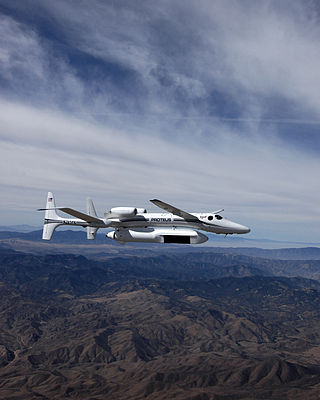
The Multi-Platform Radar Technology Insertion Program (MP-RTIP), is a U.S. Air Force project led by contractor Northrop Grumman to develop the next generation of airborne air-to-air and air-to-ground radar systems. While initially planned for multiple platforms, the MP-RTIP is currently intended only for the RQ-4B Global Hawk UAV.
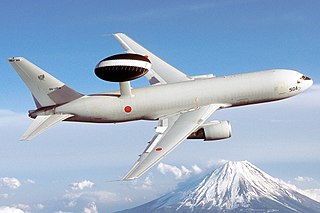
The Boeing E-767 is an Airborne Warning and Control System (AWACS) aircraft that was designed in response to the Japan Air Self-Defense Force's requirements. It is essentially the Boeing E-3 Sentry's surveillance radar and air control system installed on a Boeing 767-200.
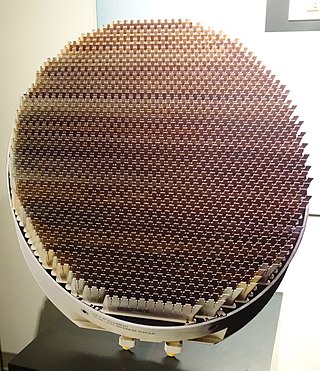
The AN/APG-81 is an active electronically scanned array (AESA) fire-control radar system designed by Northrop Grumman Electronic Systems for the Lockheed Martin F-35 Lightning II.
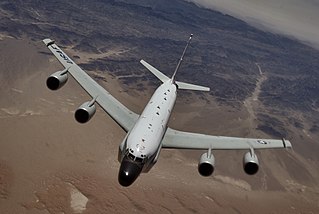
Signals intelligence operational platforms are employed by nations to collect signals intelligence, which is intelligence-gathering by interception of signals, whether between people or between machines, or mixtures of the two. As sensitive information is often encrypted, signals intelligence often involves the use of cryptanalysis. However, traffic analysis—the study of who is signalling whom and in what quantity—can often produce valuable information, even when the messages themselves cannot be decrypted.

The EADS/Northrop Grumman KC-45 was a proposed aerial refueling tanker aircraft based on the Airbus A330 MRTT. The United States Air Force (USAF) had ordered 179 KC-45As in the first stage of replacing the aging Boeing KC-135 Stratotanker tankers currently in service. However, the contest was reopened in July 2008, after Boeing's protest of the award was upheld. In response to the new contest, on 8 March 2010, Northrop Grumman announced it was abandoning its bid for the new contract, with its CEO stating that the revised bid requirement favoured Boeing. On 20 April 2010, EADS announced it was re-entering the competition and entered a bid with the KC-45. Eventually, the USAF selected the Boeing KC-46 Pegasus.

Airborne ground surveillance (AGS) refers to a class of military airborne radar system used for detecting and tracking ground targets, such as vehicles and slow moving helicopters, as opposed to Airborne early warning and control, whose primary role is detecting and tracking aircraft in flight. Antenna beam width should be very small to enhance resolution. This antenna size limitation demands high frequency of operation, to be operated in this mode. AGS radar is typically a medium or low power radar. It includes both maritime and land surveillance. Today, UAVs perform this operation, which often uses optical aids for surveillance.

Alliance Ground Surveillance (AGS) is a NATO programme to acquire an airborne ground surveillance capability (Multi-Platform Radar Technology Insertion Program on the Northrop Grumman RQ-4 Global Hawk). The NATO Alliance Ground Surveillance Force (NAGSF) was activated in September 2015, after it was formally agreed on the configuration of the unit responsible for operating the remotely piloted aircraft.

The Beechcraft RC-12 Guardrail is an airborne signals intelligence (SIGINT) collection platform based on the Beechcraft King Air and Super King Air. While the US military and specifically the United States Army have numerous personnel transport variants of the King Air platforms referred to with the general C-12 designation, the RC-12 specification refers to a heavily modified platform that collects SIGINT through various sensors and onboard processors.
The Next Generation Jammer is a program to develop an airborne electronic warfare system, as a replacement for the AN/ALQ-99 found on the EA-18G military aircraft. It reached Initial Operating Capability in 2021.
The Lockheed Martin Sea Ghost was a proposal to fulfill the United States Navy's requirement for an Unmanned Carrier-Launched Airborne Surveillance and Strike aircraft.

The Unmanned Carrier-Launched Airborne Surveillance and Strike (UCLASS) was a United States Navy program to develop an autonomous carrier-based unmanned combat aerial vehicle providing an unmanned intelligence and strike asset to the fleet. After debate over whether the UCLASS should primarily focus on stealthy bombing or scouting, the Pentagon instead changed the program entirely into the Carrier-Based Aerial-Refueling System (CBARS) to create a UAV for aerial refueling duties to extend the range of manned fighters, which led to the Boeing MQ-25 Stingray.
References
- ↑ "Boeing Polishes 737 Design For EP-3 Replacement : Mixed Signals." Archived 2012-02-05 at the Wayback Machine Fulghum, D. A. and Wall, R. Aviation Week & Space Technology . January 29, 2006.
- ↑ Tirpak, John A. "The big squeeze" Archived 2007-12-11 at the Wayback Machine , Air Force Magazine . October 2007.
- ↑ Sarsfield, Kate. "Bahrain acquires 767-400ER testbed for VIP use". Flight International, 27 January 2009.
- ↑ Boeing 767-400ER Technical Characteristics